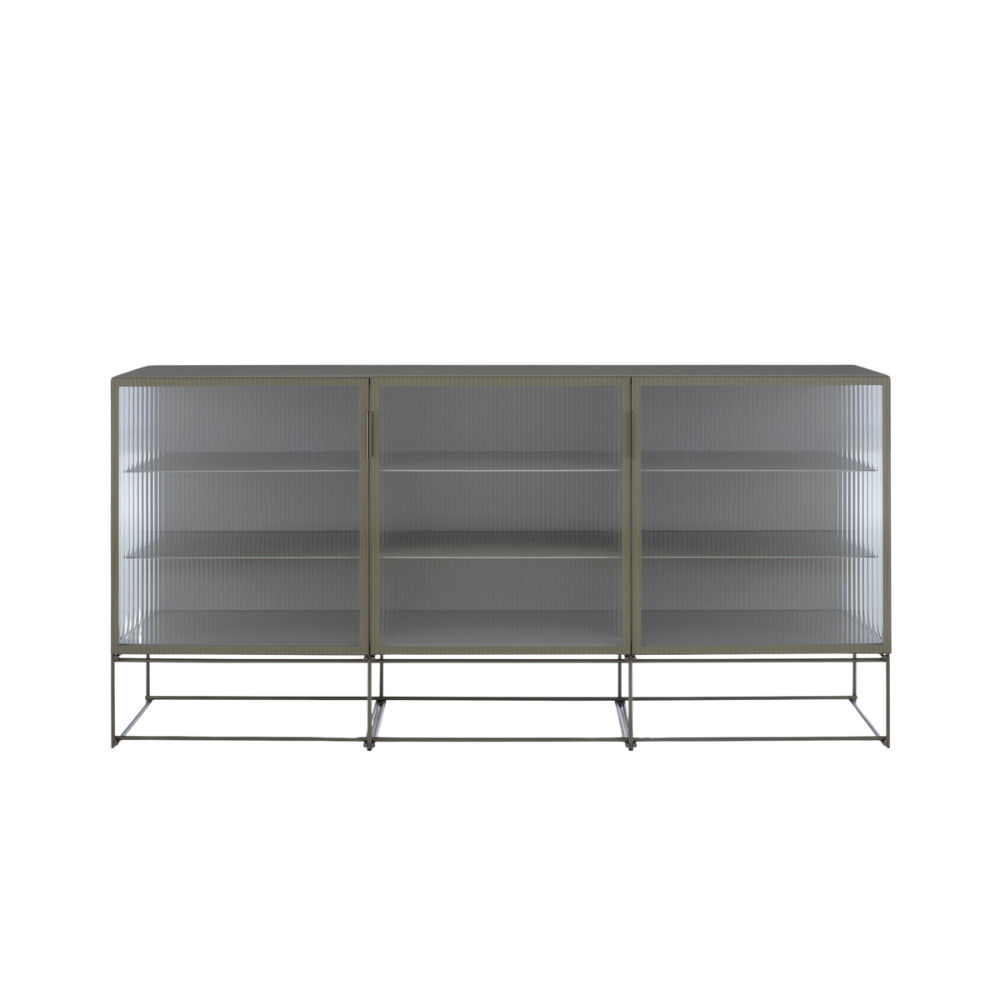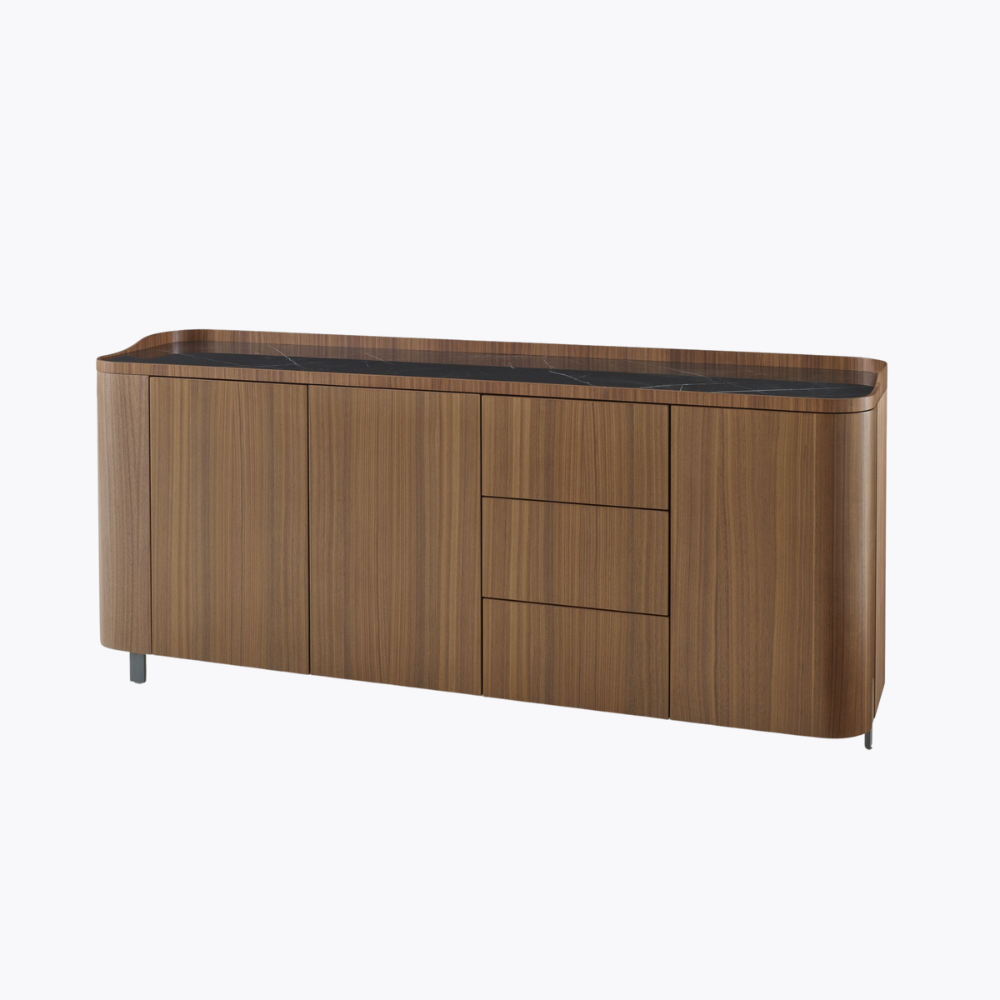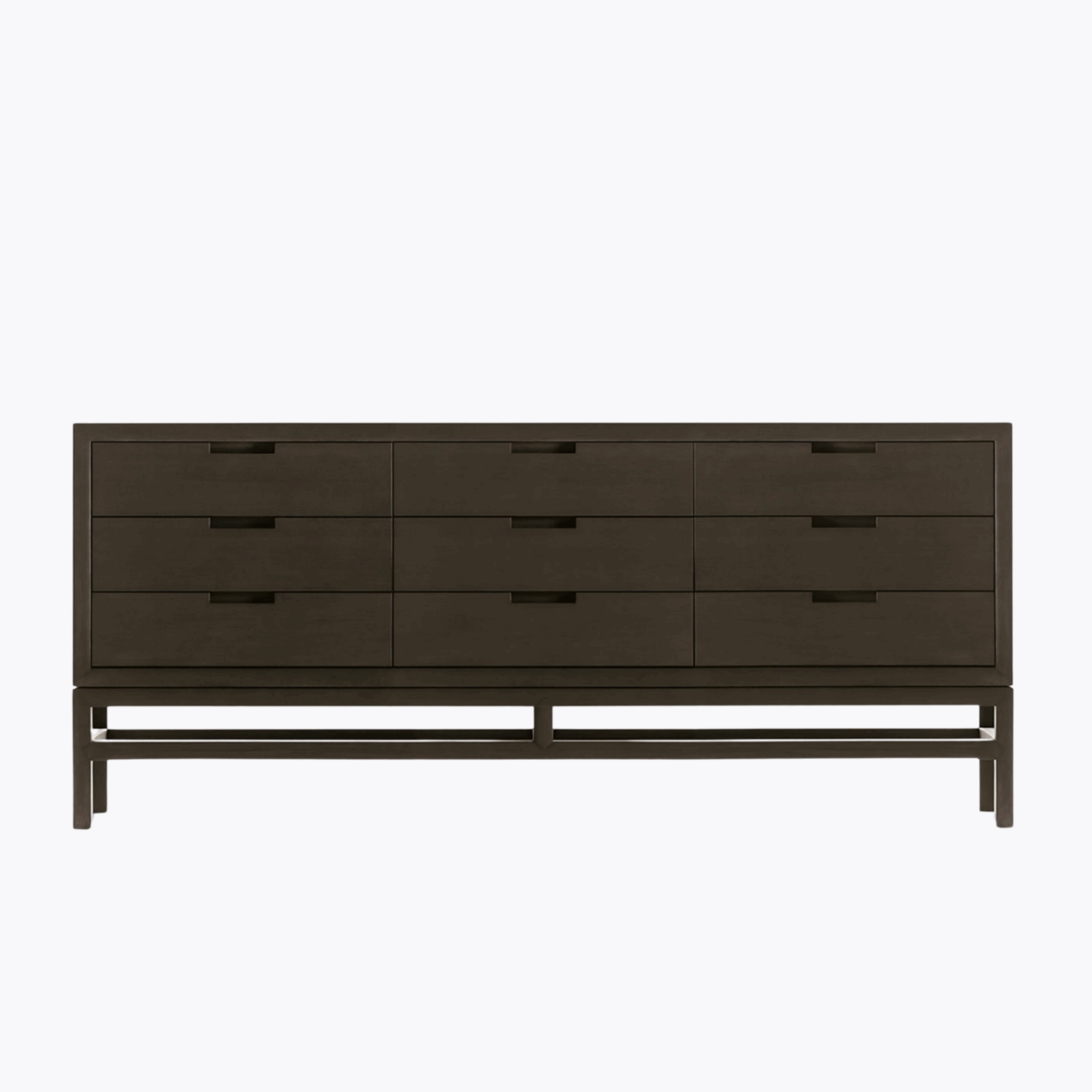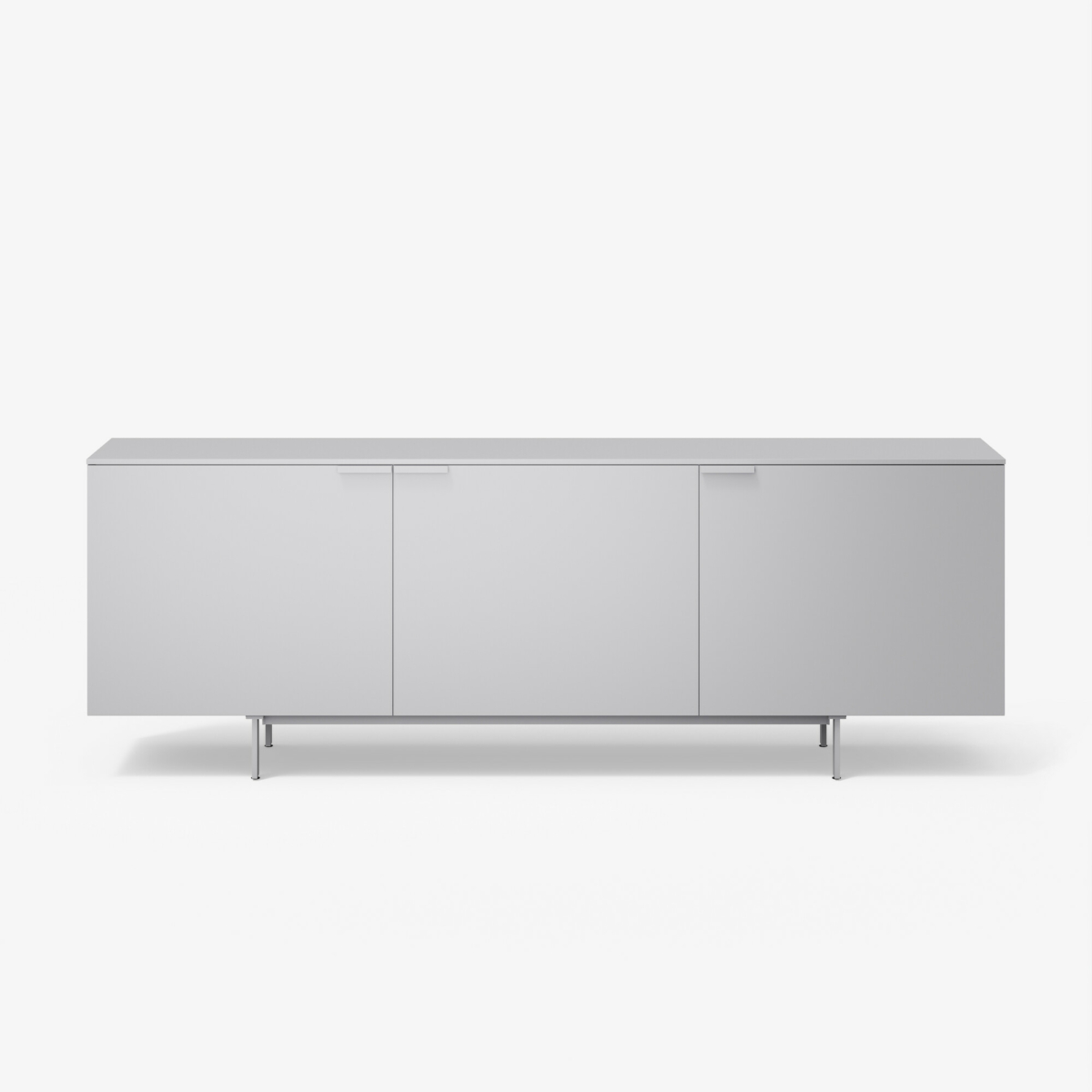TECHNICAL DESCRIPTION
The CANALETTO glazed glass collection consists of a focused yet distinctive series of pieces. The upper structure is fully glazed—front and sides—with vertically ribbed glass panels. The wide spacing of the ridged pattern alternates in relief, revealing hints of interior silhouettes as light shifts across the surface. This interplay allows for partial visibility and heightened mystery.
The doors are glazed flush with smoked, brushed anodized aluminium frames, secured by invisible adhesive beneath a bronze martingale. Internally, the metal shelves are slim, rear-mounted, and lacquered, appearing to float against the back panel, which is available in either dark walnut veneer or lacquer finishes.
Lighting enhances the sensory quality of the collection. In the display unit, four horizontal LED strips are set into the rear panels, each with a smoked diffuser that softens the light and maintains aesthetic integrity even when unlit. A remote-controlled version includes a dimmer to modulate intensity. In the sideboard and 2-door high chest, vertical indirect lighting is embedded at the rear of the interior side panels, casting a soft halo that adds depth and drama to the interior.
The steel base, with slender 12 mm round legs resembling bamboo canes, offers both strength and visual lightness. Finished in bronze lacquer to match the aluminium frames and handles, the base includes adjustable jacks for precise levelling. Height options include 250 mm or 500 mm, depending on the piece.
Tops, shelves, and bottoms are always lacquered, with a curated selection of finishes:
Argile, Bleu Nuit, Brique, Perle, or Plomb.
Back panels may either match or contrast, with the same lacquer options or in dark walnut veneer.



